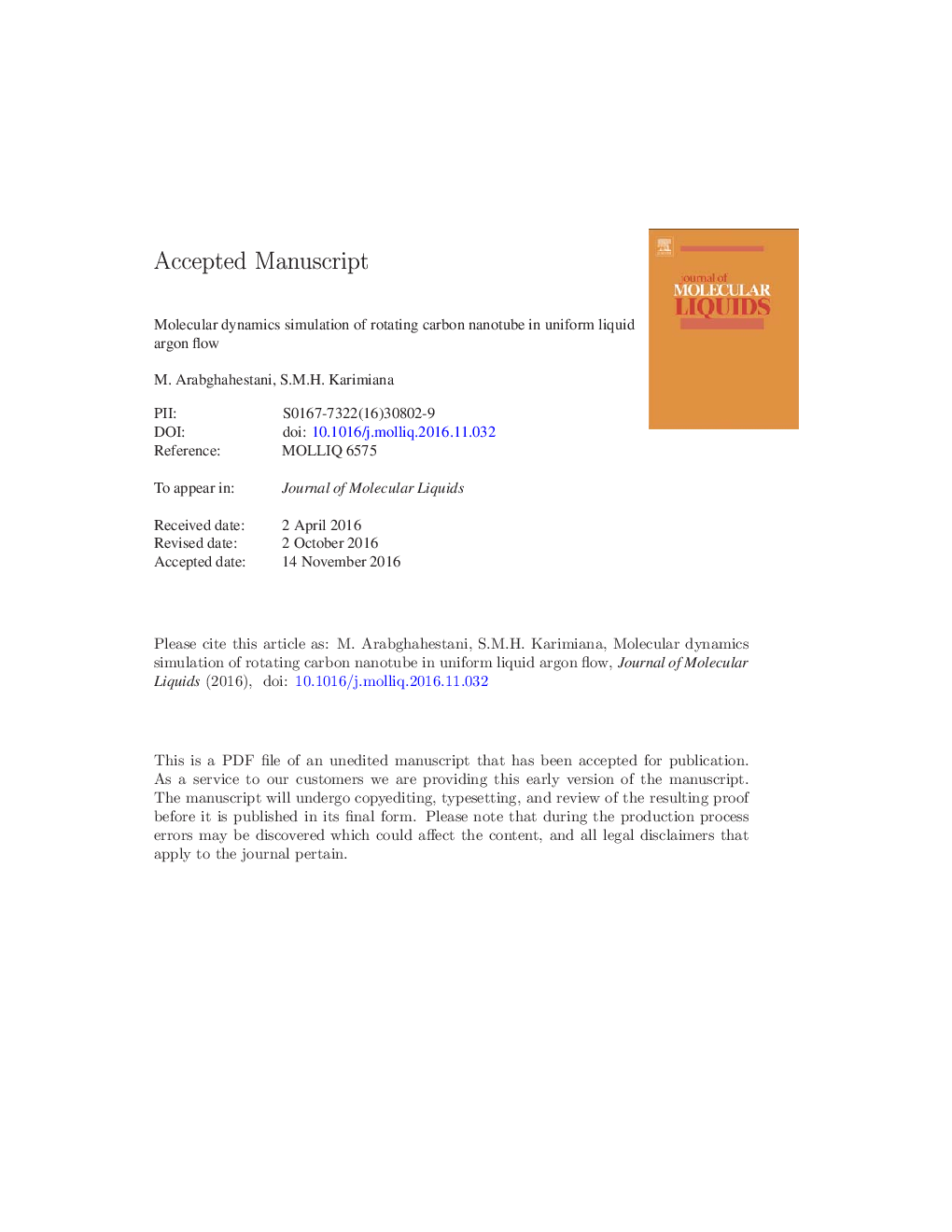| کد مقاله | کد نشریه | سال انتشار | مقاله انگلیسی | نسخه تمام متن |
|---|---|---|---|---|
| 5409240 | 1506546 | 2017 | 15 صفحه PDF | دانلود رایگان |
عنوان انگلیسی مقاله ISI
Molecular dynamics simulation of rotating carbon nanotube in uniform liquid argon flow
ترجمه فارسی عنوان
شبیه سازی دینامیک مولکولی نانولوله کربنی دوار در جریان آرگون مایع یکنواخت
دانلود مقاله + سفارش ترجمه
دانلود مقاله ISI انگلیسی
رایگان برای ایرانیان
کلمات کلیدی
دینامیک مولکولی، نیروی جریان، سرعت چرخش چرخش نانولوله کربن، نانولوله کربنی ثابت،
موضوعات مرتبط
مهندسی و علوم پایه
شیمی
شیمی تئوریک و عملی
چکیده انگلیسی
In this work, nonequilibrium molecular dynamics (NEMD) simulations are performed to investigate liquid argon flow past rotating carbon nanotube and to estimate flow forces on the nanotube. In molecular dynamics simulation, fluid forces on a floating body are calculated directly from summation of the molecular forces exerted on solid atoms by fluid atoms and this method is used also herein. Based on this method, an in-house, parallel MD code was developed to calculate drag and lift forces exerted on a carbon nanotube and investigate fluid atoms positioning around it, in a uniform flow of liquid argon. The simulation is 3-dimensional and consists of 33,669 liquid argon atoms which represent the fluid and 240 carbon atoms as the nanotube for different domain setups used in this work. The single walled carbon nanotube is simulated as a rigid cylinder of fixed carbon atoms. For simulation of rotating nanotube, carbon atoms are rotated around axis of the nanotube in each time step according to its rotational speed. Both argon-argon and carbon-argon interactions are modeled by the Lennard-Jones potential function. Periodic boundary condition is used for the whole system. Flow is driven by rescaling atoms velocity at inlet region each 50 time steps. Drag coefficient on stationary carbon nanotube in some situations are compared with that of Tang and Advani (2006) and so the in-house code is verified. Results indicate that when the nanotube is stationary, drag force increased with inlet flow velocity and lift force almost fluctuated around zero value. At higher inlet velocities, these fluctuations damped and lift force converged to exact zero value. It was also found that drag coefficient exerted on carbon nanotube always reduced with its rotational speed. This reduction was more significant at lower inlet flow velocities and as flow velocity increased, this phenomenon occurred with a lower rate of reduction. Rotational speed did not have significant effects on lift force in comparison to its effects on drag force and so it is neglected. Rotation of carbon nanotube has changed atoms positioning around the nanotube and so atomic density in the nearby bins.
ناشر
Database: Elsevier - ScienceDirect (ساینس دایرکت)
Journal: Journal of Molecular Liquids - Volume 225, January 2017, Pages 357-364
Journal: Journal of Molecular Liquids - Volume 225, January 2017, Pages 357-364
نویسندگان
M. Arabghahestani, S.M.H. Karimian,
